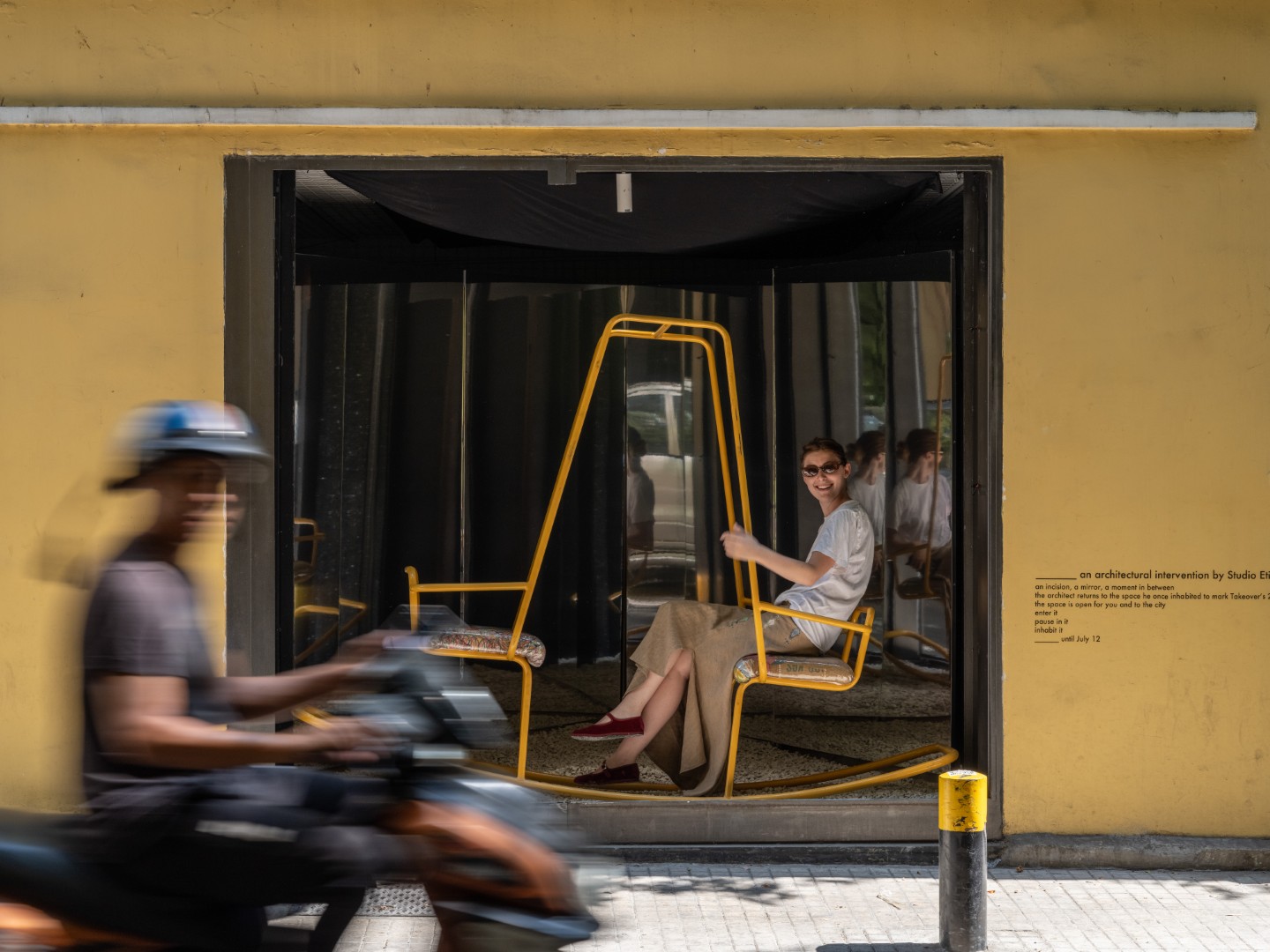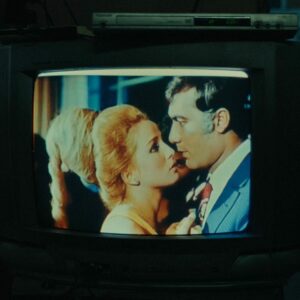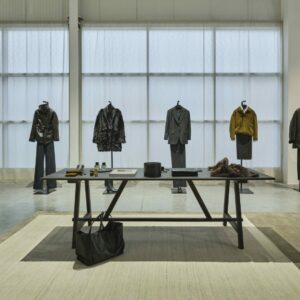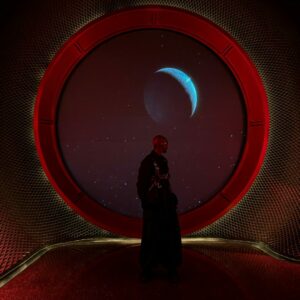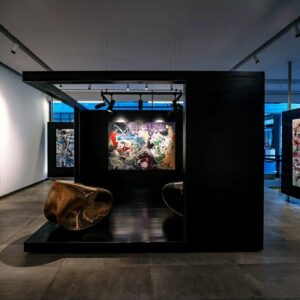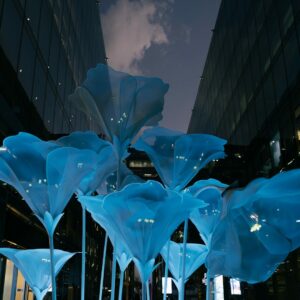In a country like Lebanon, where public spaces are scarce, the opportunity to pause, gather, or simply enjoy the city is a rarity. That scarcity is what gave rise to A Shrine for the City, a project that, even after its official run ended, continues to draw people into its orbit. In July, Beirut’s Takeover Gallery (Instagram) became something more than a site for art, it became part of the city itself.
A site-specific intervention by Studio Etienne Bastormagi (Instagram), the efforts around A Shrine for the City marked the gallery’s second anniversary in its current location by dissolving its very boundaries. In a bold architectural gesture, Bastormagi removed the gallery façade, opening the space entirely to the street. The result was neither gallery nor thoroughfare, but a liminal zone—an in-between that blurred private and public, form and flux.
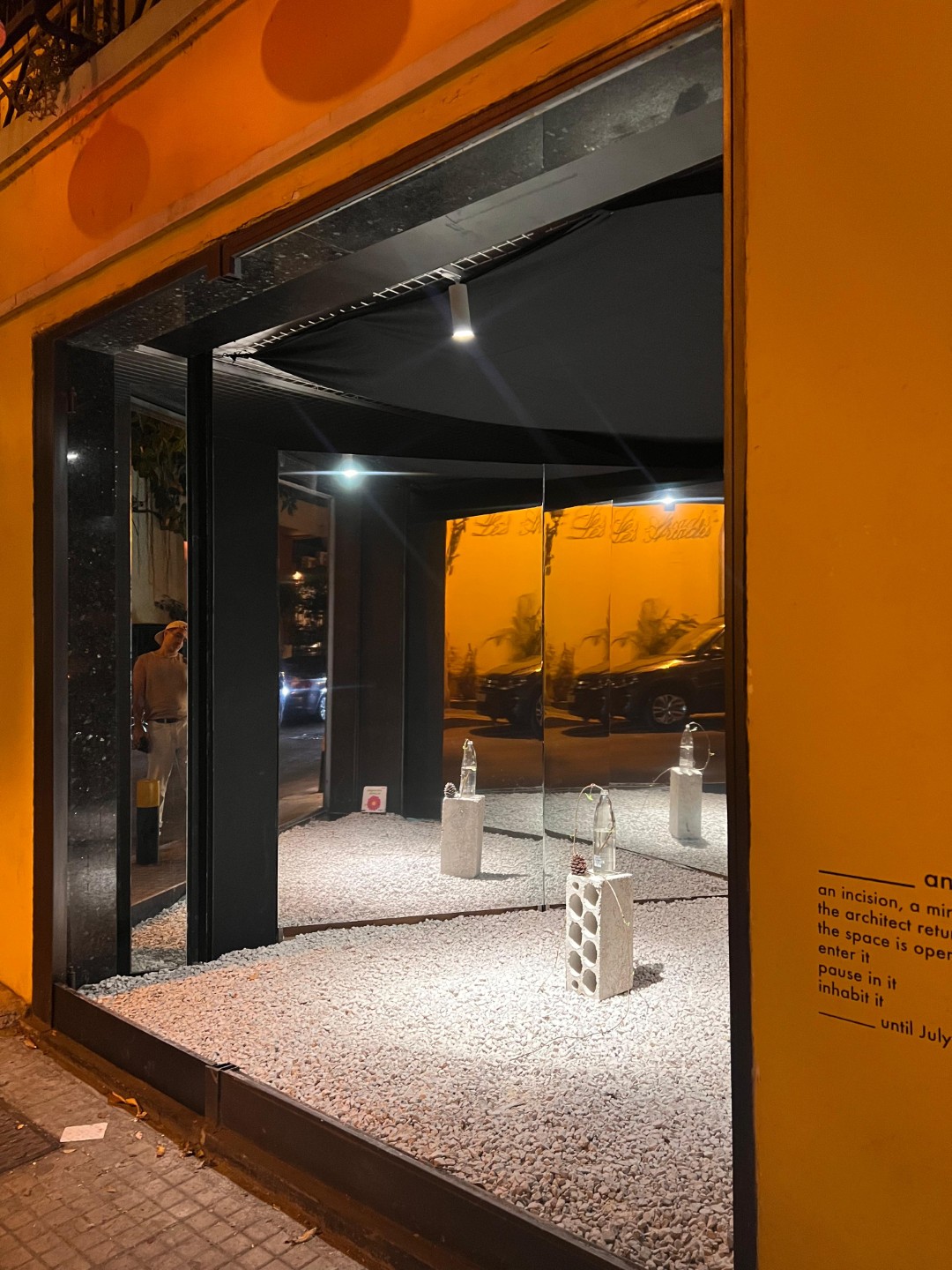
For Bastormagi, the return to Takeover carried personal resonance. The space once housed his studio, and the intervention acted as a folding of time into form. “It’s less about inserting a work into a gallery,” he said, “and more about letting the city enter it,” he said. Conceived as both incision and offering, the installation functioned like a mirror turned outward, reflecting the city back to itself while inviting passersby to pause, enter, and inhabit.
The work draws on Beirut’s vernacular of mirrored street shrines—small, reflective structures that mediate between the spiritual and the everyday. Here, the shrine is re-imagined as a contemporary urban gesture, scaled to individual experience but resonating at a collective level. It’s a space designed for encounters rather than exhibitions, where architecture acts as a frame for public life rather than an object to be observed.

Bastormagi’s approach, as in much of his practice, is rooted in attentiveness to context—social, spatial, and cultural. Constraints become opportunities for meaning, material resonance, and new forms of engagement. Ambiguity is embraced, not resolved. The structure’s porosity allows it to absorb the city’s noise, light, and movement, transforming them into raw material for contemplation. What is usually looked at becomes a place to be.
The installation was accompanied by a live performance from Lebanese-Canadian dancer and artist Corinne Skaff (Instagram) and a public conversation between Bastormagi and ArchDaily Editor in Chief Christele Harrouk. This programming underscored one of the work’s core propositions: that galleries can be more than containers for art. They can serve as active cultural participants, offering architects a platform for experimentation and visibility, and inviting the public to engage with architecture as a living, evolving practice.
In Bastormagi’s words, his practice explores “pieces within places, and places within cities—where architecture is not an object, but acts as a mediator.” That philosophy is evident across his body of work, which ranges from urban installations to interiors, from cast metal objects to community spaces. Whether designing a kindergarten roof garden that returns green space to its neighbourhood or creating a retail interior animated by a single iconic artwork, his projects are united by a sensitivity to site, an embrace of collaboration, and a constant negotiation between structure and openness.

Born into a Lebanese-Armenian family, Bastormagi’s connection to craft is both personal and generational. He grew up in his grandfather’s stainless-steel factory—where the SWANA region’s first refrigerator was made—absorbing a material fluency that still shapes his work. Today, his studio sits in the loft of that same factory, maintaining a physical and conceptual continuity between past and present. Metal often figures in his projects, not only as a structural element, but as a vessel for memory and transformation.
His contributions to architecture and design have been recognised internationally, placing as a finalist at the World Architecture Festival and the Interior Design Awards. Beyond practice, he has shared his insights through teaching and speaking engagements at institutions including the American University of Beirut, the American University of Sharjah, and the Architectural Association’s Reconstructing Beirut initiative, as well as leading workshops during Milan Design Week.
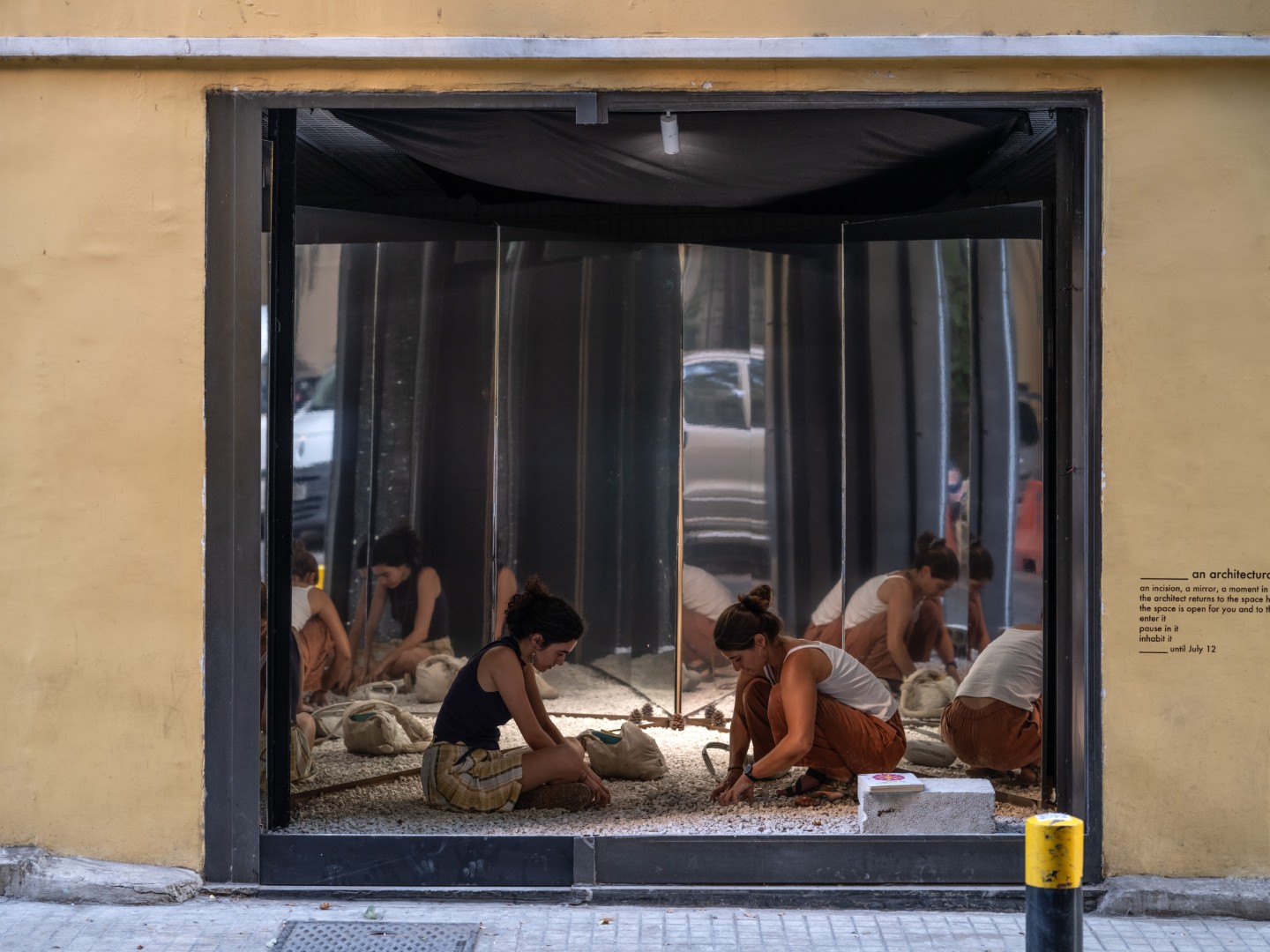
With A Shrine for the City, Bastormagi reinforces his belief that architecture can, and should, participate in the city’s cultural and social life. In a place like Beirut, where public space is scarce, the act of opening a gallery to the street carries both symbolic and practical weight. It challenges notions of exclusivity in the arts and reframes the gallery as a public commons, however temporary.
Takeover Gallery, known for its dynamic artist-led programming, provided the perfect host for such a transformation. Located on Ashrafieh’s Abdul Wahab el-Inglizi Street, the space regularly shifts between functions, from studio to installation site, screening room, workshop, all reflecting the city’s own layered, adaptive character. In Bastormagi’s intervention, that adaptability found its purest form: an architectural frame that was open 24 hours a day, inviting anyone to step inside and become part of the work.
In the end, A Shrine for the City was less an object to visit than a condition to inhabit. It existed as long as people crossed its threshold, lingered within, and allowed themselves to notice the shifting light, the passing sound, the feel of the air moving between street and gallery. It was a reminder that architecture’s most enduring role might not be to impose order, but to hold space—for possibility, for reflection, and for the city itself.
For more stories of art and culture, visit our dedicated archives.
